Is Raising Rabbits Right for You?
Is raising rabbits right for you? This page is a beginner’s intro to rabbits as pets, reasons to keep and raise rabbits, and how to begin to raise rabbits.
Bunny snuggles give joy – just ask any ten-year-old rabbit owner! But as a rule, people of all ages enjoy rabbits, both for their cuteness and for the ease of care.
The coup de grace is the fact that nearly anyone, anywhere, can create space in their life for a rabbit no matter where they live.
There are very strong moral and emotional reasons that appear to drive a lot of the desire to keep at least one pet rabbit:
- The pure love of the animal. Children love rabbits and many of them innately desire, or even long to nurture a living, breathing animal. The ease of keeping rabbits in nearly any circumstance makes rabbits a logical choice when a child or even an adult wants to bring an animal into their life.
- Ethical benefits. Caring for animals easily translates into caring for fellow humans when the flames of humanity are fanned. The child that nurtures a rabbit today grows into an adult whose capacity for compassion and empathy has enlarged to encompass both animals in general, and their fellow humans.
- Stress relief. Coming home to rabbits after a hard day away at work is a joyful thing. Rabbits are gentle, non-threatening, and non-demanding. They are a breath of fresh air. They do not criticize, and only need a bit of pellets, hay, water, and a clean environment. Oh, and maybe a bit of carrot or parsley now and then along with the cuddling that you give it.
Where Can One Keep Rabbits?
- City apartments are no roadblock to keeping rabbits. The space requirement for a single rabbit is no bigger than a single cage. Depending on the size of the rabbit, it might measure 24” by 18” for small rabbits, or up to twice that size for larger ones. A child can easily keep a rabbit or three, nurturing, tending, and loving it. Plus, the cage inside your home serves as a safe space the rabbit can retreat to if it becomes alarmed for any reason. Leave it open if you like, allowing the rabbit to roam in the areas permitted. Secure the rabbit safely in its cage when you need to leave the home or are unable to supervise for longer periods of time.
- Suburban homes. This was my situation when I began raising rabbits. My family's home was situated in the middle of a 50' x 150' lot. We had no animals other than the family cat. Our rabbits were in outdoor hutches under the shade of a massive avocado tree.
- Farms and hobby farms, those with 5, or 500, or 0.5 acres. Animal husbandry is second nature to those who already keep various livestock. With the learning curve already shortened, just add the rabbits, cages, and sacks of feed to the barn or shed.
You can keep your rabbits in your home, in backyard hutches, or in a shed or barn.
Ensure that hutches are placed out of the direct sunlight, and remain attuned to weather patterns since rabbits don't do heat well.
Housing Rabbits
Rabbits do best in all-wire cages. (Does the wire hurt their feet? Click here to find out.) We advocate cages rather than colonies for multiple reasons (see pages 84-86 in Rabbit Raising Problem Solver), but more than a few rabbit owners do their best to make it work.
We can help you with ideas for rabbit housing and directions for building your own do-it-yourself cages and hutches. Find free cage plans and links to our rabbit housing e-books here.
Are you Interested in Making the Jump beyond Owning a Pet Rabbit to Breeding and Raising Rabbits?
The point may arrive at which you recognize for yourself some very compelling benefits to breeding and raising rabbits. Yes, rabbits are stress relievers, but rabbits also fill physical needs. They supply wool, fur, and meat, all of which can enrich your life, the lives of your pets, and the lives of countless others around the globe.
Here are some of those benefits - do you think any may apply to your own life?
- Rabbits multiply quickly. Or as some put it, "rabbits breed like rabbits." This is because God gave rabbits to the world in order to feed predators. Three fourths of all bunnies in the wild become prey by the time the litter is 12 weeks old. This still leaves a LOT of bunnies alive to thrive and multiply. For you, this means you will likely be able to feed your family and yourself, plus your dogs and cats, and possibly still have rabbits to sell to others.
- Rapid reproduction means that potential exists, should you be interested, to create a part time or full time income from raising rabbits.
- Rabbits can produce more meat than does a beef cow, in much less space. A cow requires an entire pasture, while a single female meat rabbit can be housed in a cage measuring 36x30 inches, and cages can be stacked if necessary. On the other hand, the cow grazes throughout most of the year, but the rabbit will be dependent on its owner for all its food and water. This means raising rabbits can be somewhat more labor-intensive than, say, cattle or chickens (which can also forage, returning to the coop at night). You might decide, however, that the extra labor is well worth the rewards.
- Rabbits don't crow at 5:30 a.m. They are quiet and unobtrusive, opening rabbit raising possibilities to far more people than would have the option to farm or raise large livestock.
- Rabbit manure is a cold manure - ideal for use directly in the garden or flower beds.
- The great outdoors is their smorgasbord. Rabbits can eat a wide variety of herbs, hays and vegetables. Nevertheless, since they are in your care, they will need you to help them get a good balance of nutrients, and sufficient protein through the months of winter. It can be labor-intensive to obtain and feed a natural diet of grass and herbs to rabbits. The tradeoff is to purchase bags of commercial feed which is a complete and balanced diet.
- Rabbit meat is good for you, but even better if eaten with a few carbs and some added fat.
People have believed for years that rabbit meat is the best dietary meat for humans, due to the extremely high protein levels, extremely low fat content, and low cholesterol levels. However, if rabbit (or other very lean meat) would comprise 45% or more of your diet, you could run into a digestive problem called rabbit starvation. However research is beginning to reveal that neither cholesterol nor fat are enemies of human health. (Refined sugars are the bad guys.) So cook that rabbit with bacon and eat with potatoes!
Keeping and Raising Pet Rabbits
Some individuals are simply captivated with the magic of finding tiny bunnies in the nest box. Watching the little kittens grow is truly magical. Mama does instinctively do what every doe has done for the last forever, and the bunnies grow and grow. Three-week-old bunnies are the cutest bunnies ever! Before too long, the oh-so-cute bunnies become beautiful adult rabbits, able to produce their own offspring a lot sooner than you'd think.
If you're like many others, one litter may not be enough. Many folks have discovered that there are multiple reasons for raising rabbits, reasons that soar way beyond “cuteness.” We've mentioned some of these reasons above, and we'll name a few more below.
But for those of you that simply allow your male and female rabbits to produce an occasional litter, it's all good, especially when you have buyers for the pet rabbits.
And, Raising-Rabbits can help you with that - see our Rabbit Classified Ads page.
Notice: It is illegal to release foreign species into the environment in the USA. Our non-native domestic rabbits qualify as a foreign species in the Americas.
Additional Reasons for Raising Rabbits
The reasons for the shift from keeping a pet rabbit to raising rabbits for various other purposes are varied. For some people, including myself, a pet rabbit is the gateway to breeding rabbits and raising at least one litter of bunnies. The experience turns out to be extremely pleasant.
Below are other very practical reasons why one might want to raise rabbits on a longer term basis. You may wish to use these products for your needs, or even to create a hobby business on the side.
Raising Rabbits for Show
Raising rabbits for show satisfies several important needs. First, recognizing and breeding toward a standard of perfection for a particular breed strengthens that breed and improves the ability of those rabbits to meet or exceed the qualities for which the breed is known. Coloration improves. Body type improves. Mothering abilities improve. Nearly any characteristic in a rabbit breed can be improved through careful selective breeding.
Second, by showing rabbits, the breeder gains the opinion of a judge who is trained to recognize excellence in each breed. The knowledge you gain from the professional opinion helps the breeder make good choices as to which rabbits to breed and which to remove from the breeding program.
Third, at a rabbit show, rabbits of a same breed, sex and age are compared to each other, turning the event into a competition complete with trophies or ribbons. For most rabbit breeders, rabbit shows are very fun, whether or not the breeder comes home with the coveted Best in Show.
Pictured are two Best of Breed winners in the running for Best in Show. On that day, Aurora Rex Rabbit Ranch's Castor Rex doe (on the left in the photo) won BIS!
Raising Angora Rabbits for Wool
You may like to keep a few angora rabbits for their wool. Angora wool is ultra-light, and extremely warm. In fact, spinners typically prefer to mix rabbit angora wool with sheep wool for weight and structure.
Wool production makes for a great cottage industry if spinning and knitting is your passion. Sell the wool raw or spun into yarn. Or, knit your own garments and sell the finished product on Etsy or another ecommerce platform.
Raising Rabbits for Meat
Life seems more and more chaotic these days. The more difficult it becomes, the more people look to animals, including rabbits, for survival and self-reliance. This has been true for the last 5,000 years at least, during which time societies relied heavily on farming and homesteading lifestyles.
Rabbits can provide a LOT of meat per female rabbit! One single doe can comfortably produce 40 bunnies per year, translating to 100 pounds of rabbit meat, 40 rabbit livers, and perhaps 9 gallons of rabbit bone broth. If your family will use more than this per year, simply add one or more breeding does to the homestead.
As you calculate the needs of your family, don’t forget the dietary needs of your pet dogs and cats. They love to eat rabbits. Cats are obligate carnivores, and dogs are considered to be mostly (but not entirely) carnivorous. Rabbits are an excellent food source for both species. Even sensitive dogs and cats seem to do well when rabbit is added to their diet.
Meat rabbits can also be raised commercially. Click to learn more about commercial rabbit raising.
Raising Rabbits for Fur
Fur is extremely important to people living in very cold climates. There is nothing that keeps people warm like genuine fur. Hats, tuques, mittens, coats, muffs, bed spreads, and blankets are just some ideas for rabbit fur projects. Homemade fur items are in high demand in cold regions, including Alaska.
Rex pelts sell very well in European furrier markets, Rex rabbits are the main breed for fur, though several other breeds are commercially desirable.
In reality, the fur from literally any rabbit breed will be very warm.
Fur rabbits are raised until the fur achieves its first prime at approximately 6-7 months of age. “Prime” means that the hair shafts are fully grown out with no sign of slippage or molt. Butchering is done carefully to ensure a high quality pelt, and the meat carcass becomes a “by-product.” This doesn’t at all mean wastage. A 6-month-old roaster rabbit is larger and of better overall dietary quality for both humans and pets, due to mature age and somewhat more fat content.
To sell fur commercially, you need to collect your nearly identically colored pelts into bundles of at least 40 in order to sell to a commercial furrier. When this cannot be reasonably accomplished, consider making your own products or garments out of fur and marketing them via the internet.
More By-Products of Raising Rabbits
- Manure. What goes in must come out. Rabbit digestion is such that they produce ample droppings. Rabbit manure is a "cold" manure. You can shovel the droppings directly from under the cages, or empty the cage drop pans directly into the garden without fear of burning either plants or flowers. Place the urine hot spots in a separate spot or in the compost pile, as the urine can burn plants.
Serious gardeners will pay good money for your rabbit manure. If you have any to spare for others, don't underestimate this income stream. - Worms thrive in manure. They will migrate from far and near, and also multiply quickly in the rich nutrients in the rabbit manure. Worms can be marketed by weight to fishermen, or sold online to gardeners, worm keepers, or fishermen.
How to Start Raising Rabbits
Once you've made your decision to raising rabbits, start small with a trio of rabbits - 1 buck, 2 does. Purchase the best breeding stock you can afford. Expect to pay around $40 - $75 for each rabbit. Some popular breeds such as Netherland Dwarfs, Holland Lops, or Continental and Flemish Giants might set you back $150 or more per animal.
Ensure that what you buy is healthy.
It is not an advantage to get breeding stock that is vaccinated with Bunny Vac.
Here is what else you are likely to need when you start breeding rabbits:
- 6 wire cages for 3 rabbits and litters of growing bunnies: simple cages cost around approximately $40 each. The easiest way to set up these cages is on PVC hutch frames. If you have the space, use a single-tier system. This will save time because you won't have to clean out drop pans. Our plans for building rabbit cages e-books give the directions for building multiple cage systems, including underground cages for those in hot climates.
If you prefer, build or purchase hutches or other types of cages of your choice.
- J-feeders are by far the easiest feeders to use for feeding rabbit pellets. They can be filled from the outside and will save a lot of time. These typically cost $5 - $12, depending on size.
- Water crocks or water bottles, feeders - $7 each.
If your rabbitry begins to grow beyond just a few rabbits, you'll definitely want to consider an automatic or semi-automatic water system, which might cost $100 more or less, depending on number of rabbits it will supply water to. A large tank above the cages gravity-feeds water to the rabbits via rubber tubing (or PVC pipe) and drinking bibs.
- Commercial rabbit pellets: $15-25 per 50-pound bag. Also consider keeping grass hay such as timothy or orchard hay on hand. Straw is important in the case of diarrhea, and as nest box stuffing.
- Nest Boxes. Whether you live in a hot or cold climate will help dictate the type of box that is best for your area. In chilly northwest Washington State, I like wood or metal nest boxes, solid floors, and I stuff the box to the brim with wood shavings, hay and straw. Others in very warm climates prefer wood boxes with a screen floor. Ask other rabbit breeders in your area what their preferences are.
- Rabbit toys. These should be chewable, such as safe-to-eat branches, or blocks of wood. The cost to you is minimal with these DIY toy ideas.
Shelter: Free-standing hutches are likely to be securely roofed, but cages and hutch frames will need a roof of some sort over them. A shed or barn works, or even a carport canopy. Or, you may keep your rabbits in your garage or other structure.
Predator Protection: This is last on the list but it is NOT the least concern. Many are the rabbit owners who lost animals to wild dogs, raccoons, foxes, coyotes, or even cougars. Make your cages with strong wire, and surround your entire rabbitry with livestock panels or other strong fencing. You won't be sorry for these precautions.
Begin Raising Rabbits
Once you start raising rabbits, go slow and get comfortable with successfully taking care of rabbits. Learn what is healthy for the rabbits and what is not. Raise a litter or three successfully. Recognize threats to rabbit health before those threats kill the rabbits. When you're ready, then add more animals to your breeding project.
Additionally, you will grow in wisdom and knowledge if you can attend local rabbit shows. The ARBA website provides the show schedules throughout the USA.
Make friends with fellow rabbit breeders. Rabbit breeders love to talk shop, and they tend to help each other and answer one another's questions. In this way you can overcome various rabbit raising challenges in record time. Your confidence and success will soar.
Resources to Help You Get Started with Raising Rabbits
Rabbits are very easy to raise, but there ARE some considerations you should pay attention to, for example, weather extremes, predators, and parasites, to name a few. Feeding rabbits is important as well. Adding multiple rabbits and/or a breeding program adds extra layers to the learning curve.
The best safeguards for you and your rabbits are education and preparation!
Here are our favorite helpful resources:
- Storey's Guide To Raising Rabbits is an excellent basic resource for raising rabbits. It began under the title of "Raising Rabbits the Modern Way" probably 50+ years ago, and is now in its 5th edition under the current title. Click here to get it from Amazon. (And by the way, the earlier editions are still terrific.)
- Rabbit Raising Problem Solver is available in paperback and Kindle versions. Click on the link for more info, and to purchase an autographed copy. It is also available from Amazon and wherever books are sold. Frequently described as a “rabbit bible,” Rabbit Raising Problem Solver is a stand-alone resource answering every possible question one might think to ask. Or, pair it with Storey’s Guide to Raising Rabbits.
- The American Rabbit Breeders Association (ARBA) is an international organization serving rabbit breeders in the USA, Canada, Mexico, and Japan. Consider becoming a member. Members receive the excellent resource, Raising Better Rabbits and Cavies, a booklet that includes many of the basics of raising both rabbits and guinea pigs (cavies).
- Checklists and links to much of the free information on Raising-Rabbits:
- Rabbit Care Checklist - for beginning rabbit owners
- Rabbit Care
- Pet Rabbits
There is a wealth of absolutely free information on the Raising-Rabbits website. Take advantage of it! Look through the pages, click into the website's search function to find topics that interest you, and see how others have solved problems similar to yours! If necessary, purchase a resource, whether paperback, kindle, or PDF.
Is raising rabbits right for you? We hope so!
Double-Value Guarantee
Our policy is to always OVER-deliver
on value,
which is why your purchase is fully covered by our
Double-Value
Guarantee.
Go ahead - take any of our e-books for a test drive. Peruse our detailed informational and educational e-books. Examine our plans for building rabbit cages, runs, or metal or PVC hutch frames. Check out the Rabbit Husbandry info e-books.
If you aren't completely satisfied that your e-book purchase is worth at least double, triple or even quadruple the price you paid, just drop us a note within 45 days, and we'll refund you the entire cost. That's our Double-Value Guarantee.
Note: When you purchase your
e-books, they will be in PDF format, so you can download them to any device that
supports PDF format. We advise making a back-up copy to a drive or cloud
account. If the books are lost, you can also purchase another copy from Raising-Rabbits.
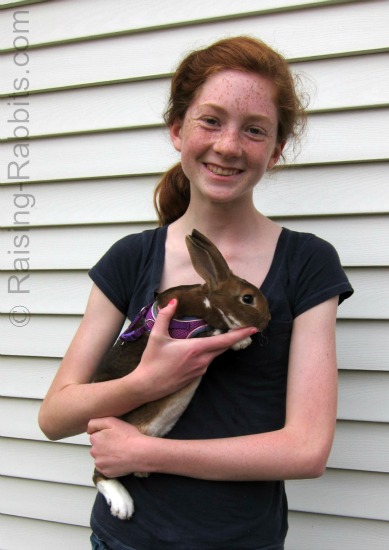
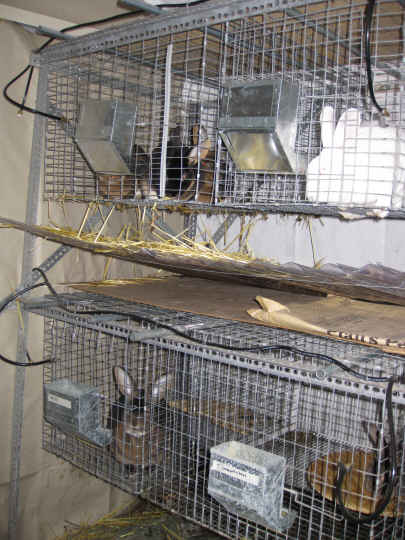
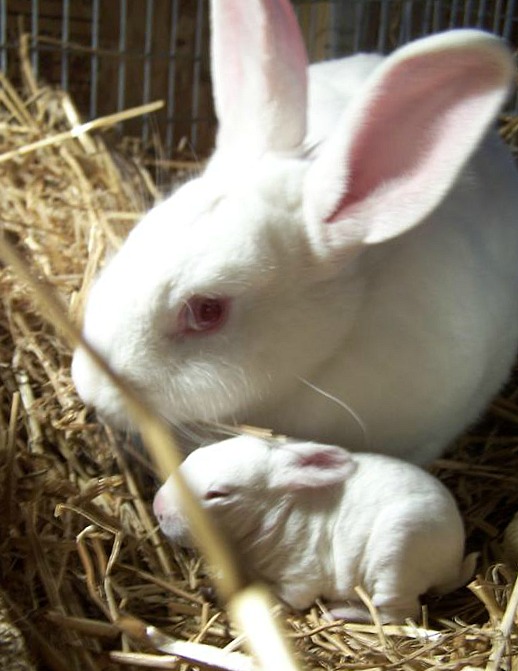



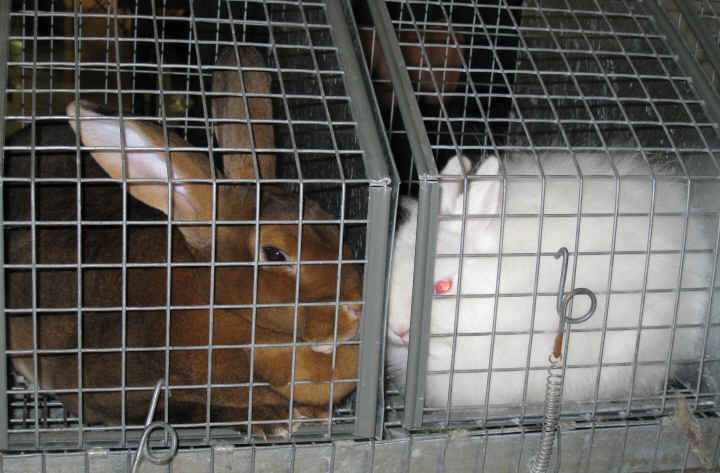
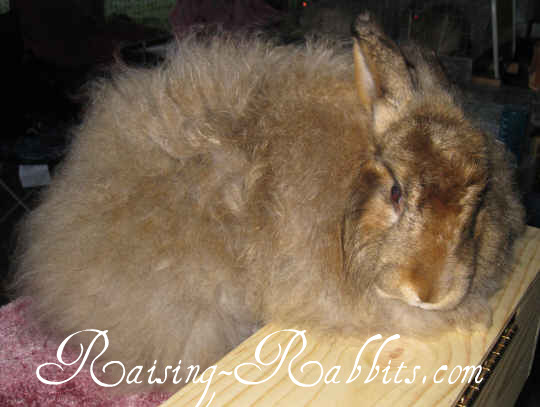
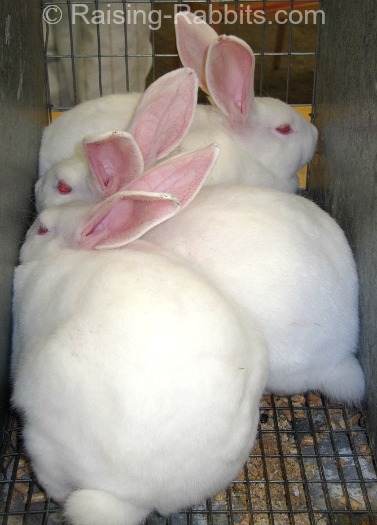
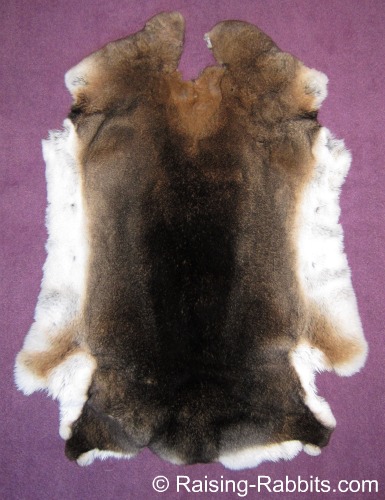
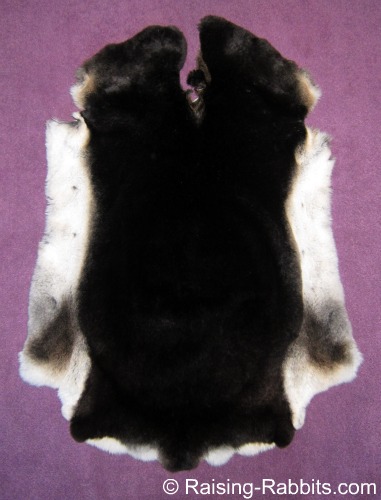
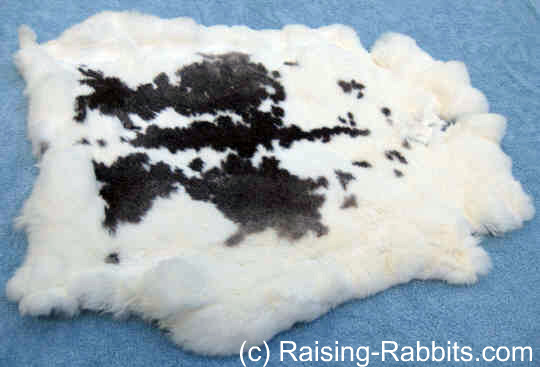

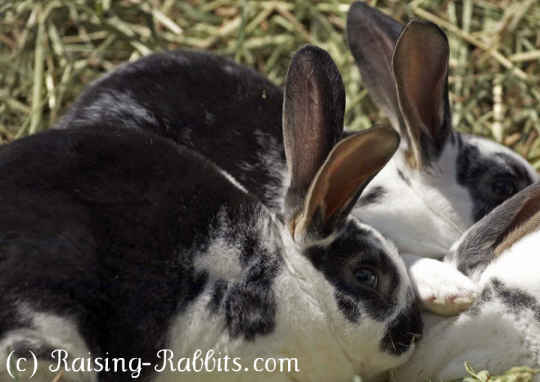
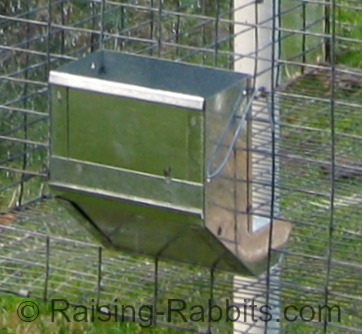


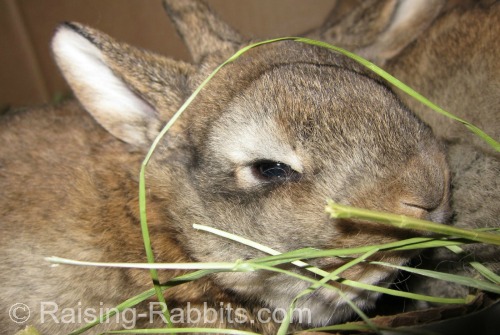
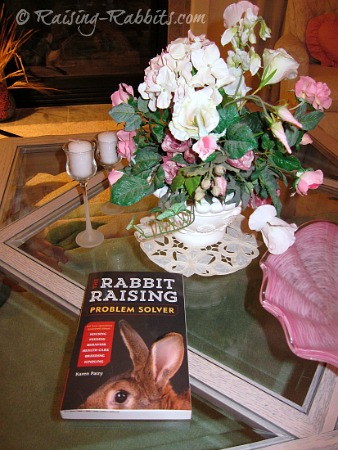
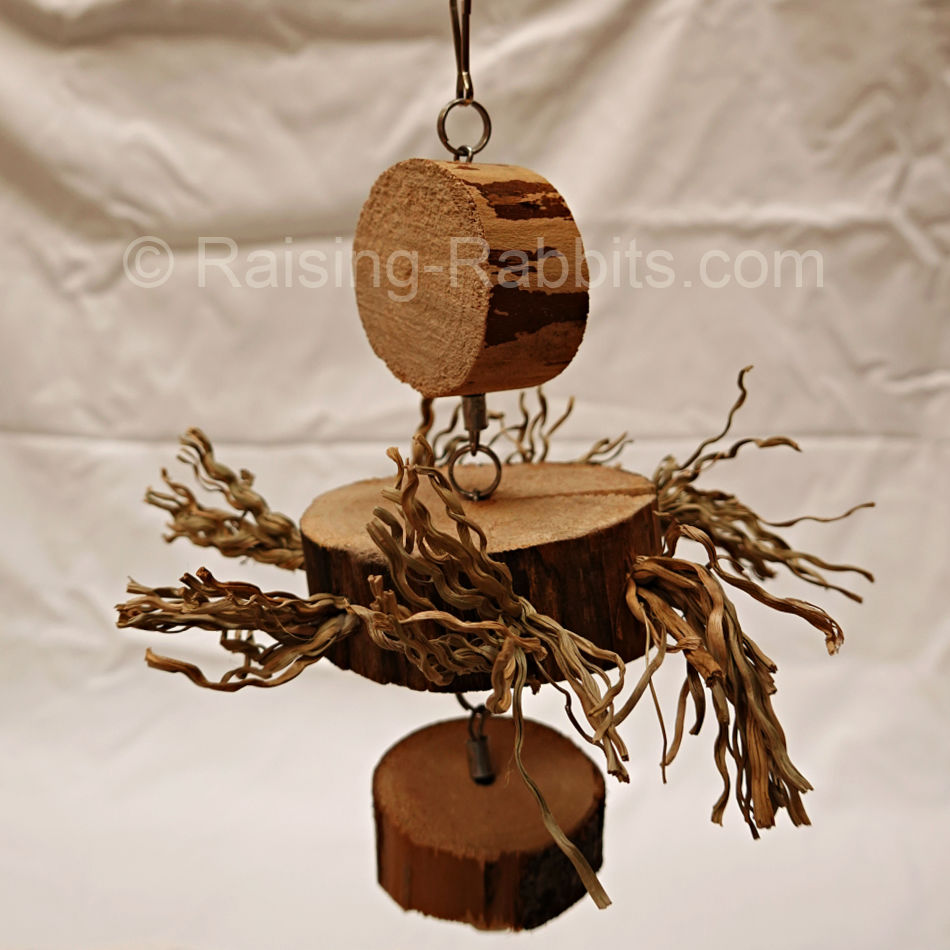
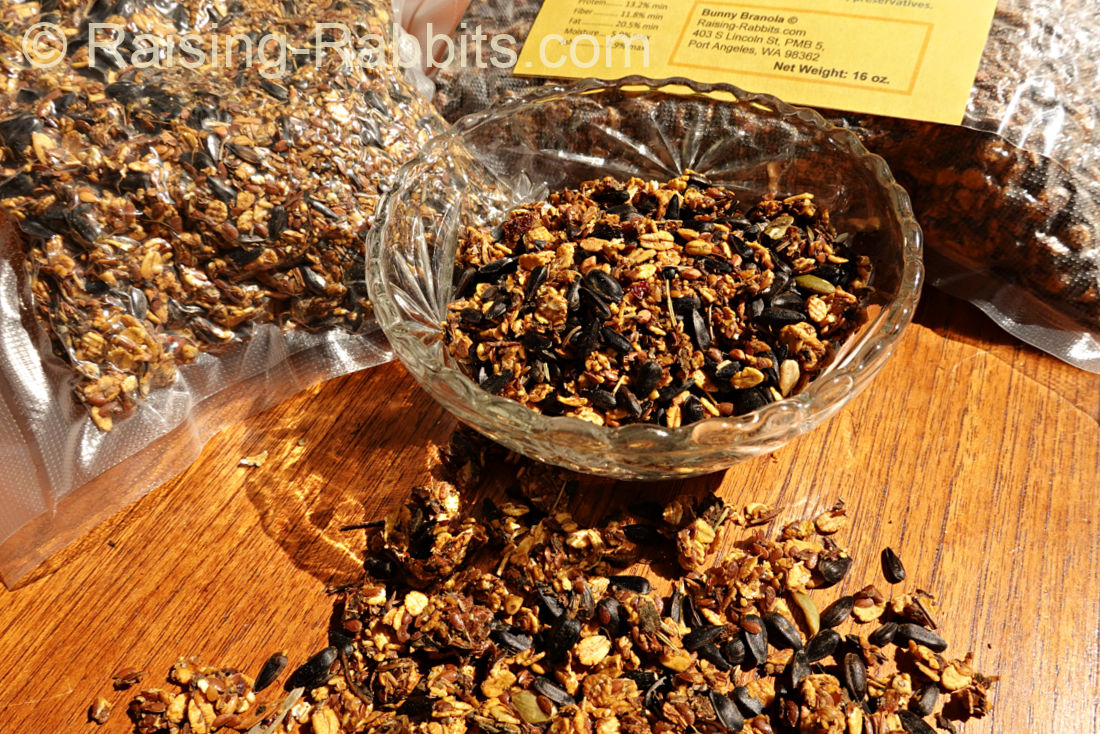






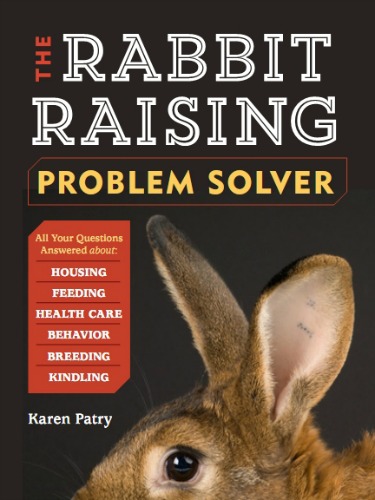

New! Comments
Have your say about what you just read! Leave me a comment in the box below.